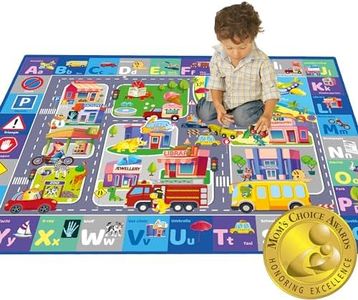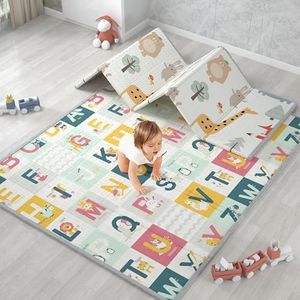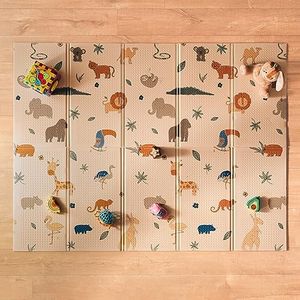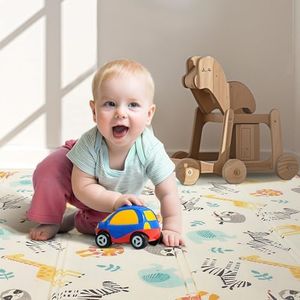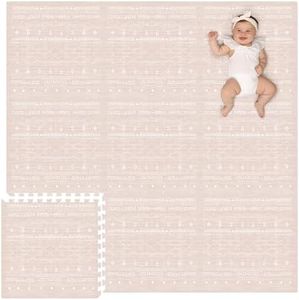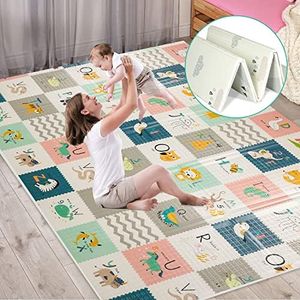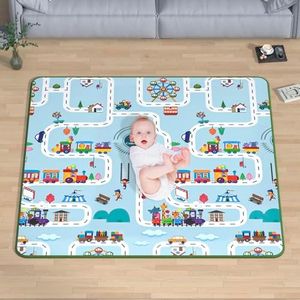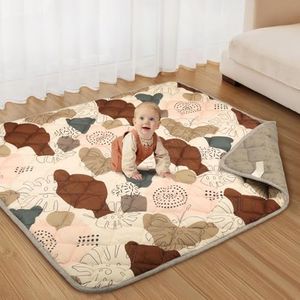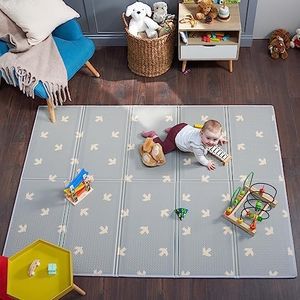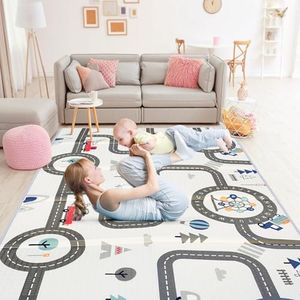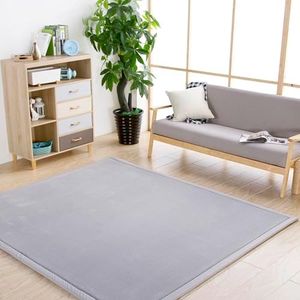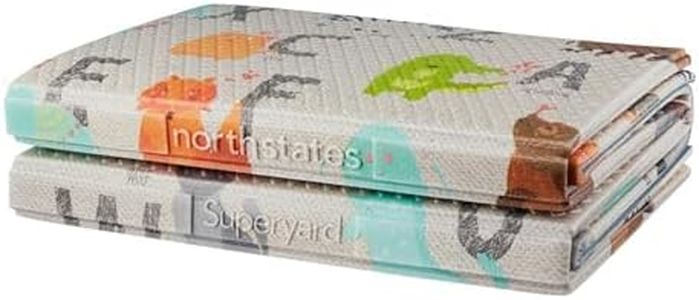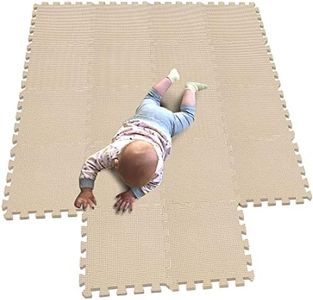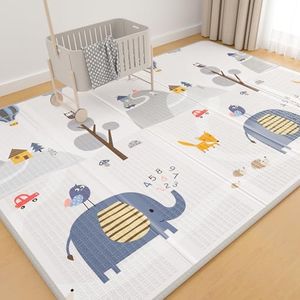We Use CookiesWe use cookies to enhance the security, performance,
functionality and for analytical and promotional activities. By continuing to browse this site you
are agreeing to our privacy policy
10 Best Folding Play Mats
From leading brands and best sellers available on the web.Buying Guide for the Best Folding Play Mats
Folding play mats are a great purchase for families with young children, providing a soft, safe space for playtime while also being easy to store. When choosing a folding play mat, it's important to consider materials, size, thickness, surface texture, ease of cleaning, and portability. Your family's needs and the space where the mat will be used should drive your decisions, ensuring a balance between comfort, convenience, and safety.MaterialMaterial refers to what the play mat is made from, such as foam, fabric, or rubber. This is important for comfort, safety, and durability. Soft foam is popular for its cushioned feel and protection against falls, while fabric options can be cozier but may not offer as much padding. Some materials are hypoallergenic or free from harmful chemicals, which is an essential factor for babies and toddlers. To choose the right material, consider your child's age, sensitivity, and how much physical activity will happen on the mat—sensitive skin may benefit from hypoallergenic fabrics, and active play might require thicker, shock-absorbing foam.
ThicknessThickness is the measure of how deep or padded the play mat is. This spec is crucial because it determines the level of protection and comfort provided. Thin mats (typically under 1 cm) are easy to carry and fold but may offer less protection when placed on hard floors. Medium thickness (1-2 cm) provides a balance of comfort and portability, suitable for most use cases. Thick mats (over 2 cm) are best for extra cushioning, especially for crawling babies or active toddlers, though they may be bulkier when folded. Choose the thickness based on your home’s flooring and your child’s activity level—more active kids or harder floors usually warrant a thicker mat.
Size and Number of PanelsSize determines how much play space your mat provides, and play mats often come in foldable panels that affect both spread-out area and folded size for storage. This matters for fitting the mat into your room and for easy cleanup or travel. Compact mats (under 120x120 cm) are good for small spaces or single-child play, mid-sized mats (around 150x200 cm) suit most living rooms, and large mats cover plenty of space for siblings or group activities. The number of folding panels influences how compactly it can be stored. Choose based on play area size and storage options—measure your space and consider whether you'll need to move or store the mat frequently.
Surface Texture and DesignSurface texture refers to how the mat feels and whether it’s smooth or textured, which affects traction for young crawlers and walkers. Smooth-surfaced mats are easy to keep clean and ideal for infants, while textured mats help prevent slips for more active children. Some mats feature patterns, colors, or even educational prints, which can stimulate children visually and make playtime more fun. Think about your child’s stage and any sensory needs; if they’re starting to walk, a non-slip, textured surface is helpful, whereas for tummy time or newborns, smooth might be more comfortable.
Ease of CleaningEase of cleaning means how simple it is to keep the play mat hygienic. Spills, drool, or food are common, so this spec is vital for busy families. Mats with waterproof surfaces are easiest to wipe down, while fabric covers might need to be machine washed, which can take longer. Consider how often your child eats or crafts on the mat, and pick an option that aligns with your cleaning preferences and habits.
Portability and FoldingPortability refers to how easily the mat can be moved or taken on the go, and folding design determines how compact it becomes for transport or storage. Lightweight, multi-panel mats are ideal for travel, grandparents’ houses, or use outdoors. Heavier mats may be sturdier but less convenient to move. If you plan to move the mat often or store it after each use, look for folding mats that are easy to carry and store, with handles or storage bags if possible.
